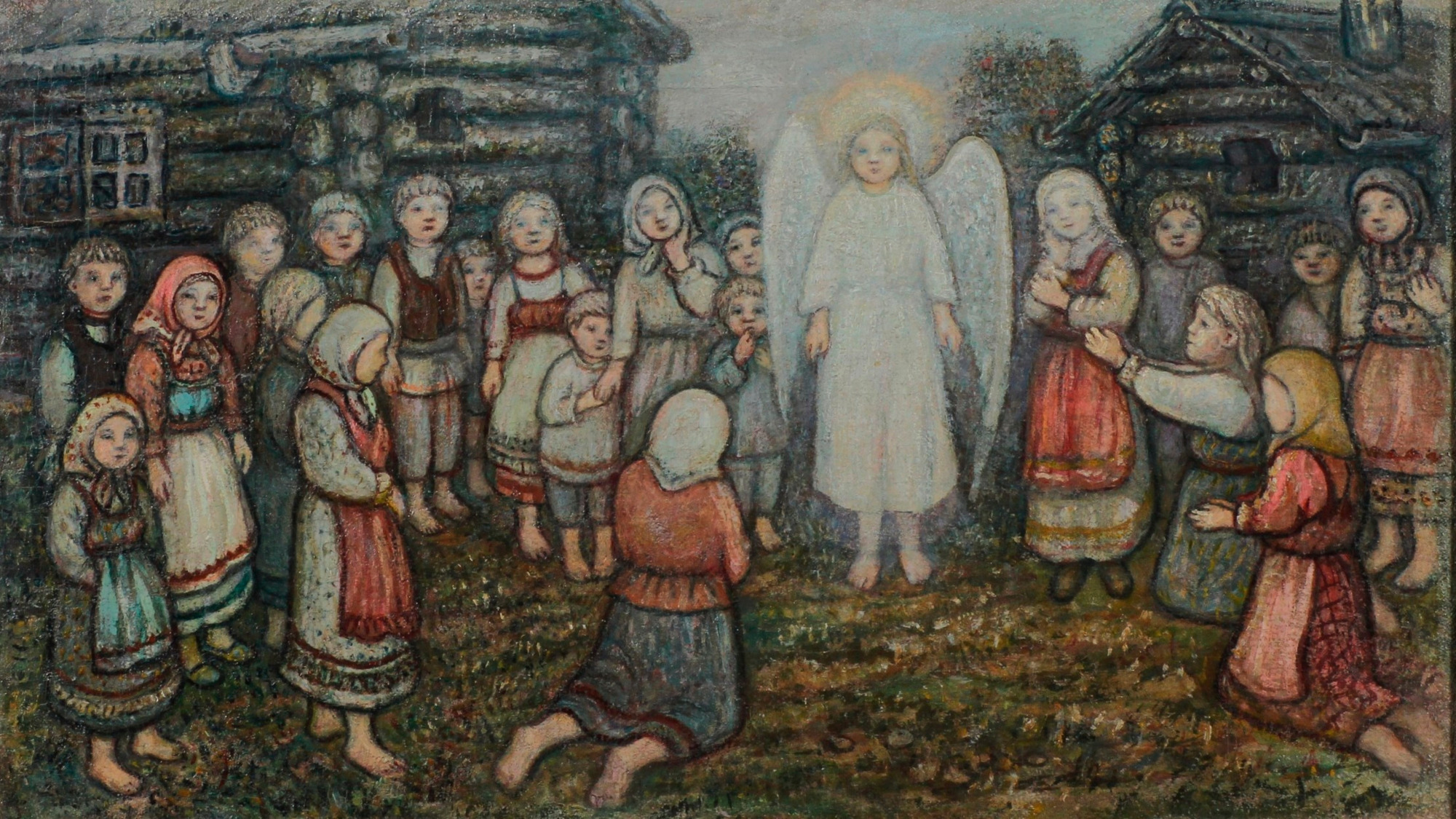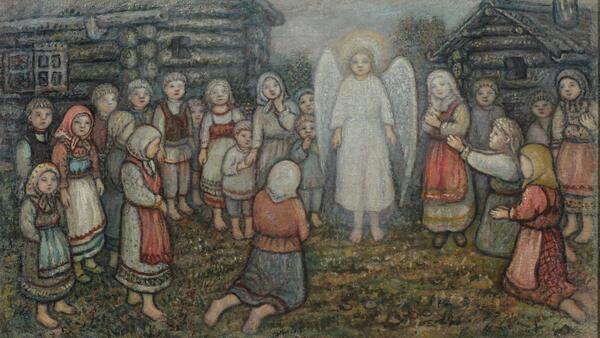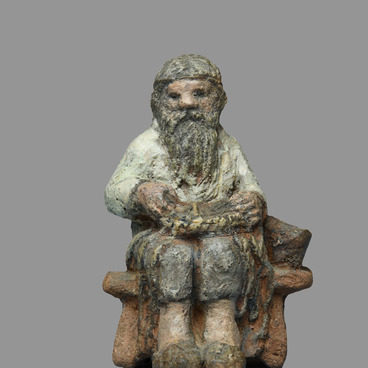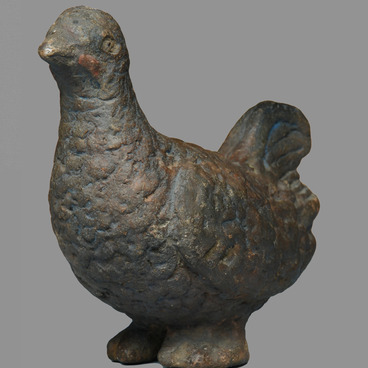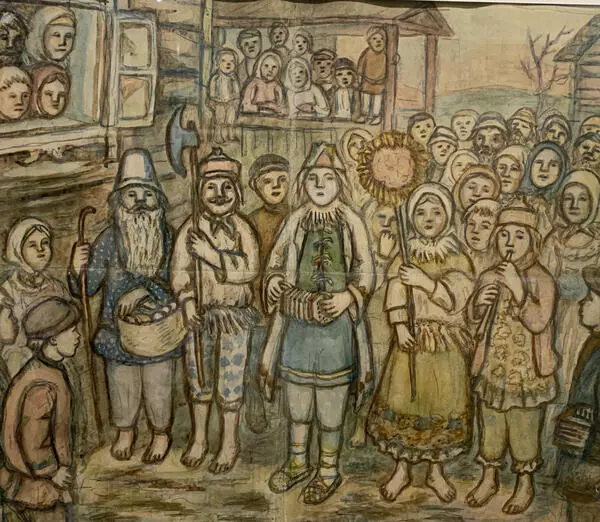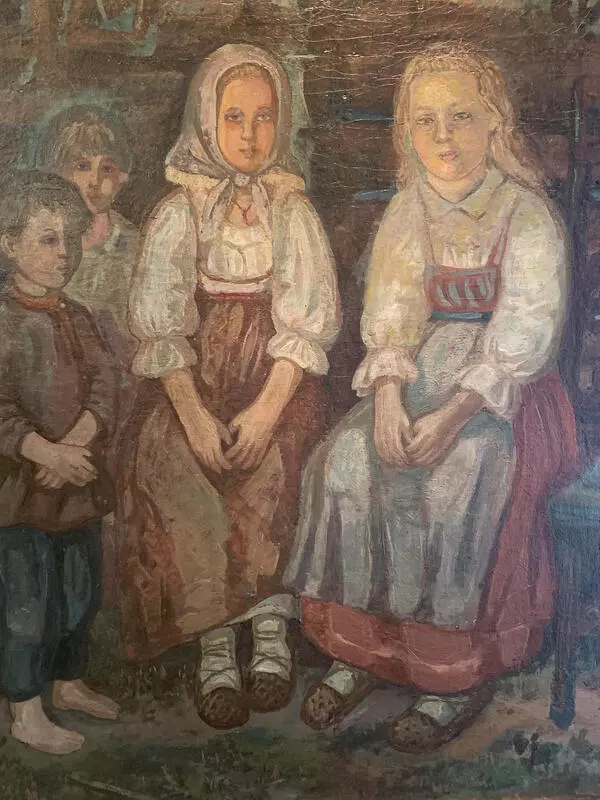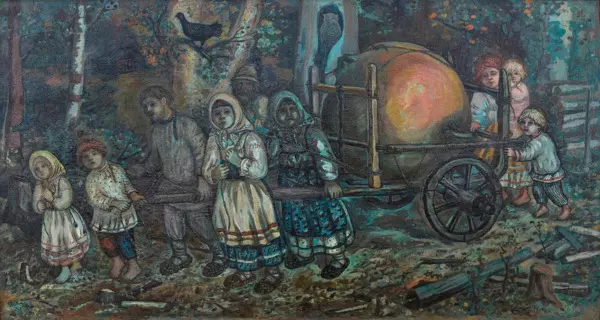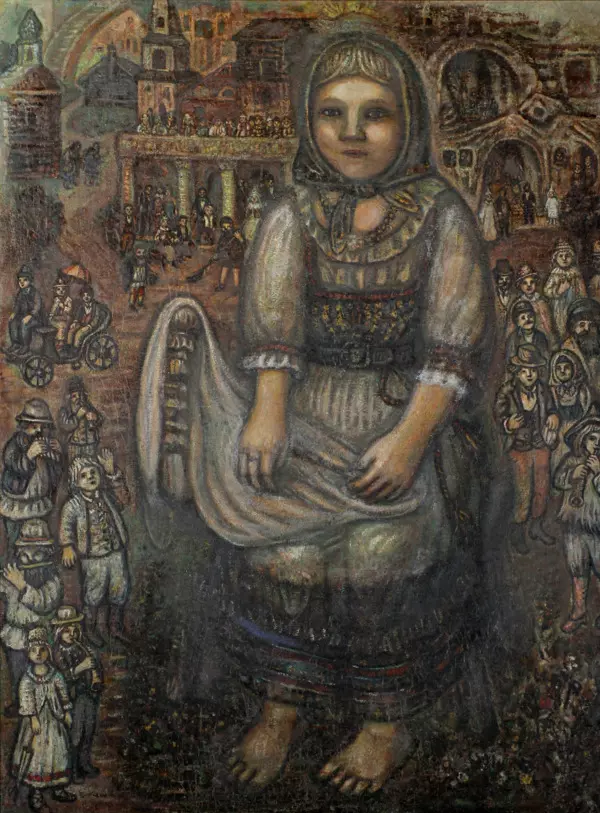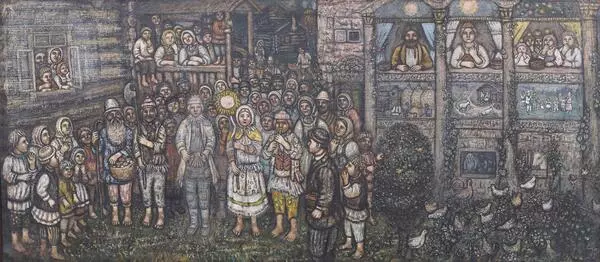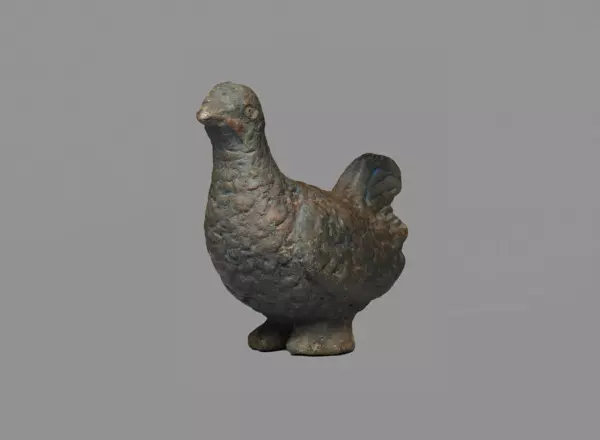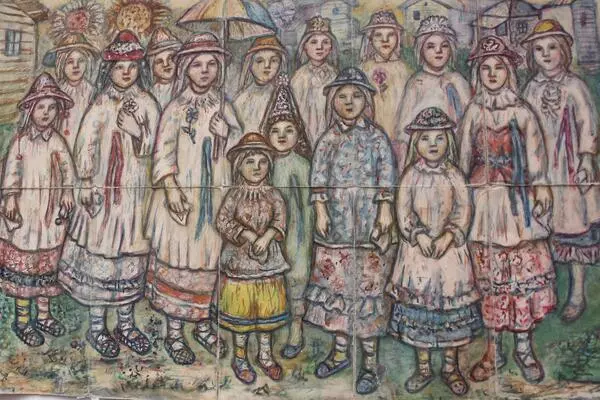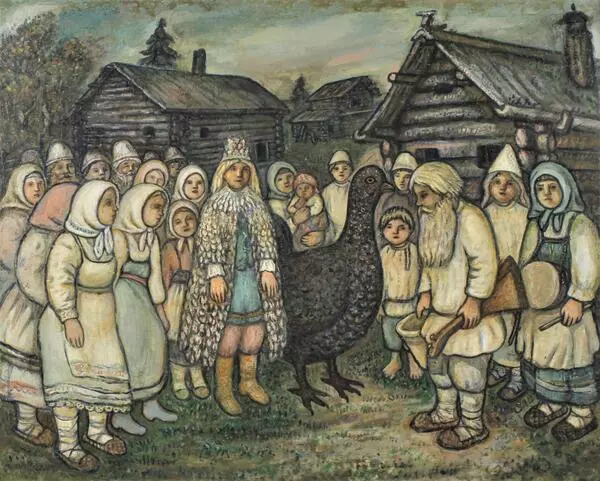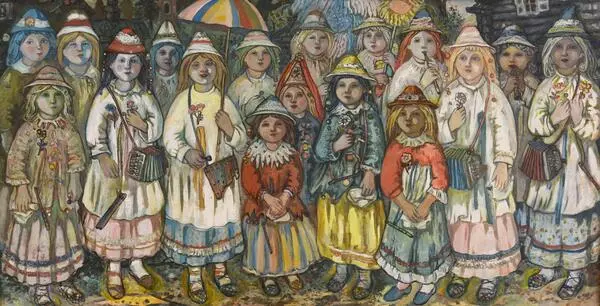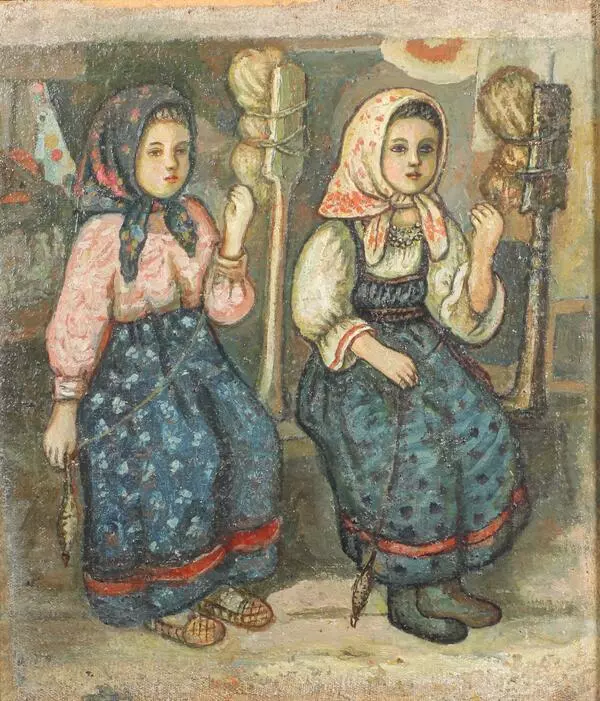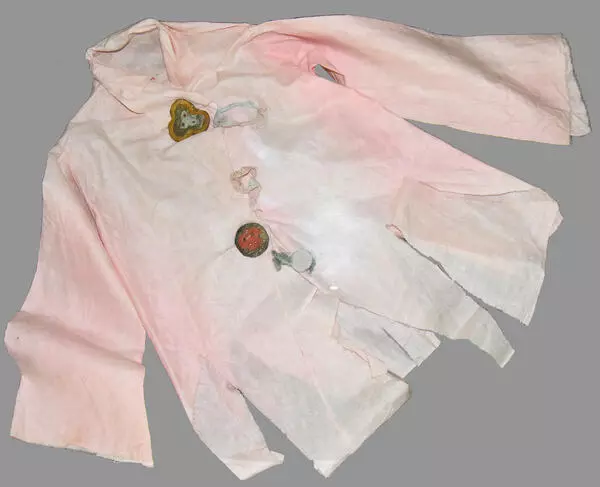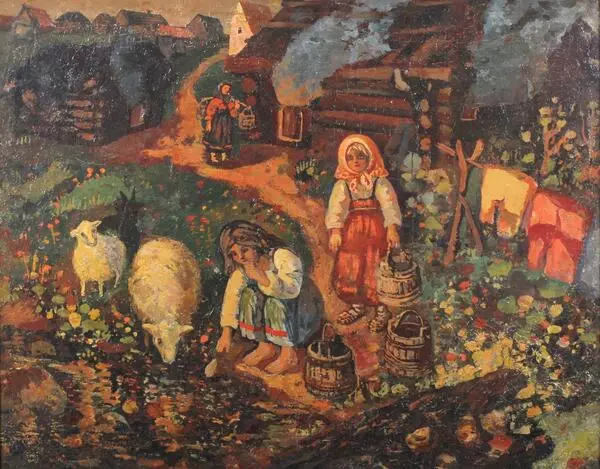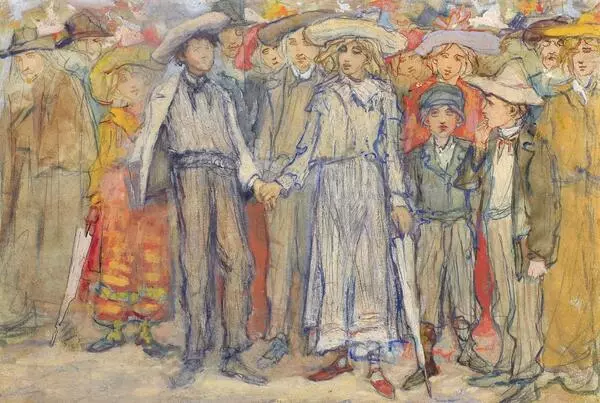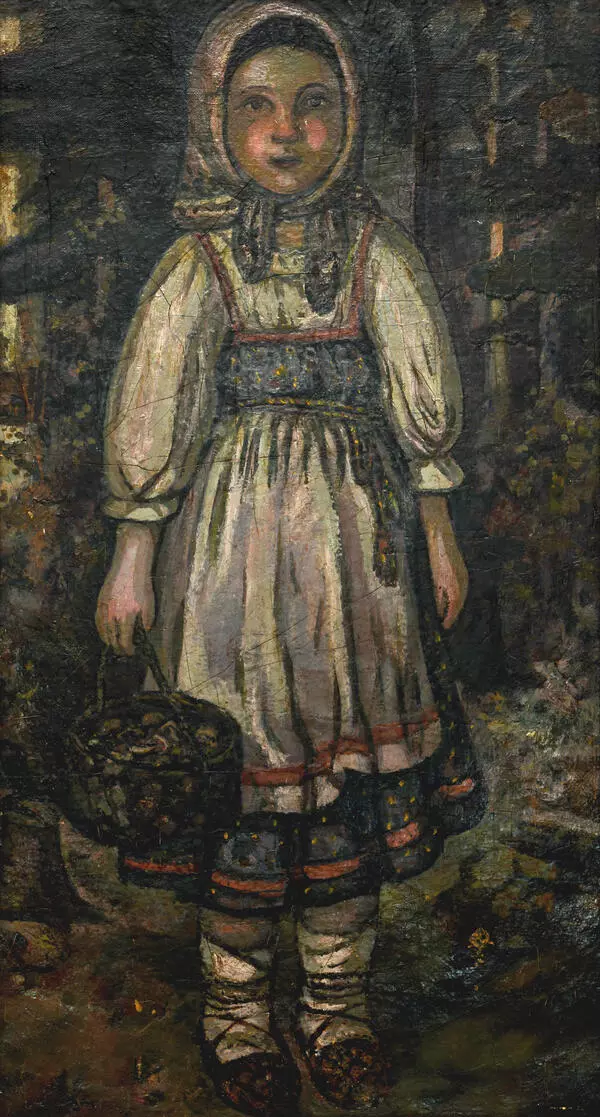In the years immediately following his studies at the Academy of Arts, Yefim Chestnyakov adhered to the traditions of naturalism in art. At the time, he depicted scenes from the daily life of village inhabitants in his works of art. Everything in them was true to life and easily understandable to viewers. Peasants surrounding Yefim Chestnyakov became his main subjects. Among the painter’s numerous art works, it is difficult to find one that does not depict children.
The painting “Peasant children” occupies a special place in his art. In it, daily life and an unusual miraculous event coexist together. The landscape, with its sturdy village houses and grass-covered plots, looks real, and so do the peasant children of various ages. And yet, in this art work, it was not the artist’s intention to depict the world of a peasant village around him faithfully.
At the center of the painting, there is a figure of an angel wearing light-colored clothing - the core concept behind this work of art. Such imagery is not common to Yefim Chestnyakov’s other creations. The key to this scene lies in the artist’s allusion to a child’s soul being open to everything that is pure, beautiful and light. Yefim Chestnyakov was convinced that art could transform a Russian village, and that it was essential to first get children involved in building this new life. In his mind, the longing for the divine during childhood years would become principles to live by later on in life. Innocent and pure at heart children, like messengers from another world transformed, were able to see what adults, overwhelmed by harsh earthly realities, could not.
The painting’s composition is reminiscent of a scene of a play. Its main subjects are village children of various ages, who are, for the most part, depicted with their faces turned to the viewers but, at the same time, their gazes are directed towards the angel. The glow coming from this being illuminates their surprised adoring faces. Some of the girls have fallen to their knees in amazement at the uncommon sight. The figure of the girl to the right of the angel is especially prominent.
The color scheme of the painting is similar to that of many other art works by Yefim Chestnyakov. It is based on blue and turquoise hues and is used to emphasize the fairy-tale feel of the scene. Simple homemade clothes the village children are wearing are transforming and filling with bright colors emanating from the magical glow. In the painting ‘Peasant children’, the artist depicted the duality of his world: the actual village of Shablovo where he lived and his noble dream for the children’s future.
The painting “Peasant children” occupies a special place in his art. In it, daily life and an unusual miraculous event coexist together. The landscape, with its sturdy village houses and grass-covered plots, looks real, and so do the peasant children of various ages. And yet, in this art work, it was not the artist’s intention to depict the world of a peasant village around him faithfully.
At the center of the painting, there is a figure of an angel wearing light-colored clothing - the core concept behind this work of art. Such imagery is not common to Yefim Chestnyakov’s other creations. The key to this scene lies in the artist’s allusion to a child’s soul being open to everything that is pure, beautiful and light. Yefim Chestnyakov was convinced that art could transform a Russian village, and that it was essential to first get children involved in building this new life. In his mind, the longing for the divine during childhood years would become principles to live by later on in life. Innocent and pure at heart children, like messengers from another world transformed, were able to see what adults, overwhelmed by harsh earthly realities, could not.
The painting’s composition is reminiscent of a scene of a play. Its main subjects are village children of various ages, who are, for the most part, depicted with their faces turned to the viewers but, at the same time, their gazes are directed towards the angel. The glow coming from this being illuminates their surprised adoring faces. Some of the girls have fallen to their knees in amazement at the uncommon sight. The figure of the girl to the right of the angel is especially prominent.
The color scheme of the painting is similar to that of many other art works by Yefim Chestnyakov. It is based on blue and turquoise hues and is used to emphasize the fairy-tale feel of the scene. Simple homemade clothes the village children are wearing are transforming and filling with bright colors emanating from the magical glow. In the painting ‘Peasant children’, the artist depicted the duality of his world: the actual village of Shablovo where he lived and his noble dream for the children’s future.
